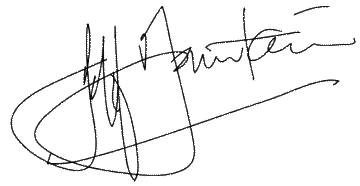So the clocks go back an hour in Europe this weekend. Halloween parties start this weekend and will spill over through the coming week.
On Halloween itself, this Tuesday, the last day of October, Protestants will commemorate Martin Luther’s dramatic start to the Reformation. The next day, faithful Catholics will light candles and pray for departed souls to observe All Saints Day.
Believe it or not, all these events this week have a common connection. In fact, we could even say that Halloween triggered the Reformation!
A generation ago, Halloween was an American celebration, not European. Globalisation has changed that. Across Europe this week, businesses eagerly cash in on the profit-making opportunities of ghosts, skeletons and death. Fun-lovers see an occasion for crazy dressing-up, partying and ‘harmless’ flirting with the spooky underworld.
Few will know or care about the feast’s pagan-Christian origins. Nor that it points to something secularists try hard to ignore: that European culture has been fundamentally shaped by Christianity, for better or for worse.
For the name Hallowe’en comes from All Hallows’ Eve on the traditional church calendar, the eve of All Saints’ Day: when all saints and martyrs, known and unknown throughout Christian history, are honoured. It was a day for attending church and resting, a holy-day (from which we get ‘holiday’). Originally celebrated in May, this day was moved to November 1, possibly to absorb the pagan Celtic festival of Samhain (Gaelic for ‘November’ or ‘summer’s end’), as the ‘darker half’ of the year began. On the eve of Samhain, the boundary between this world and the Otherworld thinned, inviting contact with the spirit world. As this ‘darker half’ of the year begins, we turn our clocks back this weekend.
After All Hallows’ Eve and then All Hallows or Saints’ Day comes All Souls’ Day, November 2. That’s when prayers are offered for the recently departed who are still in purgatory, according to Catholic doctrine–where the dead atone for minor sins before reaching heaven.
Soul-cakes
Trick-or-treating may have come from the custom of children ‘souling’ on All Souls’ Day. Children would go door-to-door collecting ‘soul-cakes’, small round spicey cakes marked with a cross to represent the dead for whom the children would promise to pray throughout November. These practices still survive in some parts of England and Portugal, for example.
Masks and costumes disguised oneself from dead souls looking for vengeance before moving on to the next world. Jack-o-lanterns, carved out pumpkins, with candles inside represented souls in purgatory. Children would sometimes light candles in human skulls in graveyards.
There was another way of shortening the agonies of the departed souls in purgatory: indulgences (a papal grant of remission of the temporal punishment in purgatory still due for sins after absolution). Which happened also to be a good way to raise money to build St Peters in Rome.
And here’s the connection with Reformation Day.
For after reading Paul’s letter to the Romans, Martin Luther became convinced that the buying and selling of indulgences was pure poppycock. So he drew up his list of theses, most of them reasons why indulgences were a sham. Thesis 27, for example, reads: They preach only human doctrines who say that as soon as the money clinks into the money chest, the soul flies out of purgatory.
On All Hallows’ Eve, or Hallowe’en, when brisk business in indulgences was expected, the stout monk nailed them to the town notice board, the Wittenberg Castle church door. At least, so the story goes and the Joseph Fiennes film on Luther portrays. Luther himself never wrote about that incident. But, shucks, it’s a graphic image. Historians can be nit-pickers. Anyway, we know he published his famous 95 Theses on Hallowe’en, also known as Reformers’ Day.
That was the act which led to the split of Western Europe roughly into the Protestant north and the Catholic south. Protestants everywhere rejected the doctrine of purgatory as unbiblical, and with it all Halloween activities.
Red-handed
Thus after England became Protestant, Halloween was not celebrated there. But the English did find a cause to party for with bonfires and fireworks. On November 5, in 1605, a Catholic plot to blow up Parliament, and with it royalty and nobility, was foiled. The unfortunate gunpowder expert, Guy Fawkes, was caught red-handed in the vault with 36 barrels of gunpowder. The conspirators were tortured and executed. Parliament established November 5 as a day of public thanksgiving known as Guy Fawkes’ Day. Children would chant: “Remember, remember the 5th of November, gunpowder, treason and plot; for there is a reason why gunpowder and treason should ne’er be forgot.” Effigies of the poor Guy will still be burned on bonfires across England next Sunday, accompanied by fireworks.
Dissatisfied Catholics in Scotland and Ireland later emigrated to America, taking with them their customs of Halloween where it would flourish in all states. Meanwhile Guy Fawkes has been resurrected as a populist icon through the V for Vendetta film and as the Occupy Movement hero fighting the unjust state.
All of which illustrates what we said above: European culture has been fundamentally shaped by Christianity, for better or for worse.
Till next week,



